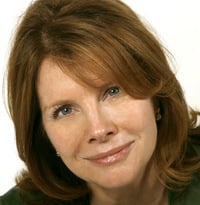The Value Of Free
 Marc Averitt, a venture capitalist at Okapi Venture Capital, posted this recently on his blog, and we wanted to share it with our readers. We've reposted it here in our Insights & Opinions section. Marc's original post is located here.
Marc Averitt, a venture capitalist at Okapi Venture Capital, posted this recently on his blog, and we wanted to share it with our readers. We've reposted it here in our Insights & Opinions section. Marc's original post is located here.
I was at D7 the other week and spent a fair amount of time discussing the “value of free” with attendees. The juxtaposition of traditional media and consumer Internet hinges on this concept so I thought I would explain a bit about what I am referring to. At the risk of oversimplifying here, a vast majority of consumers expect information/entertainment (a.k.a. “content”) on the Internet to be free in that they are not accustomed to paying for the content the Internet provides them. In fact, there is a whole generation of consumer digital denizens that only know the “Web 2.0 / free” world of the Internet. This poses a potential problem for the related industries: how do we make money if the consumer of what we produce/source/distribute expect that it will remain free?
The answer has historically been that the value exchange for such content was simply this: I provide you with my (valuable) time and you provide me with the content to occupy such time. In the exchange, you then sell advertising against my time based on my gender, age, socio-economic status, and other such demographics (a la broadcast television through most of its history). This has historically worked reasonably well for all when there were finite choices for content. See where I’m going here? That’s right, this model becomes a bit challenging as the sources of content outpace the Total Consumers Time (a.k.a. “TCT” - calculated as the total number of targeted consumers multiplied by the daily total number of minutes they spend on line). The issue has become somewhat exacerbated the past couple of years as the rise of social media and Web 2.0 tools has turned these consumer into creators of content themselves such that all consumers may someday become creators of content on-line. Additionally, the number of minutes consumers spend creating content and consuming consumer created content (a.k.a. “User Generated Content” or “UGC”) only lessen the TCT…which, in turn, negatively affects the advertising revenue of the “professional” content creators and distributors. The primary current solution is to spread advertising budgets across more and more content sources such that even when annual ad budgets increase, they are allocated across a broader spectrum of destinations…for the time being. Less you think I’m against consumer Internet, I’m not. Not even close…
The power of the Internet and all it entails is that it is becoming easier to qualitatively and quantifiably measure the reach and impact of advertising relative to an advertiser’s targeted demographic. Furthermore, advertising is changing to take advantage of such technical capabilities and the sophistication of tech-savvy consumers and is becoming much more interactive. More and more brands are exploring “branded entertainment” and looking to develop certain deep psychological associations with their products and services based on where and how they advertise. While I strongly believe that this will, eventually, lead brands away from UGC to high-quality professionally-produced content for the bulk of their advertising budgets, I’m really curious to get all of your thoughts on this matter. So, what do you think about the “value of free” and where online advertising is headed???
Marc Averitt is a Co-Founder and Managing Director of Okapi Venture Capital (www.okapivc.com">http://www.okapivc.com">www.okapivc.com) and is responsible for Okapi Ventures' information technology investments. Marc also maintains a personal blog about venture capitalp in and around Orange County at http://ocvcblog.com.
 Tony Greenberg
Tony Greenberg
 Ivan Nikkhoo, Managing Partner – Navigate Ventures
Ivan Nikkhoo, Managing Partner – Navigate Ventures Michael Sherman, Neil Elan and Karine Akopchikyan
Michael Sherman, Neil Elan and Karine Akopchikyan Alejandro Guerrero
Alejandro Guerrero Eric Eide, Alliance for SoCal Innovation
Eric Eide, Alliance for SoCal Innovation Kevin DeBre
Kevin DeBre Braven Greenelsh
Braven Greenelsh Rob Freelen, Los Angeles Market Manager, Silicon Valley Bank
Rob Freelen, Los Angeles Market Manager, Silicon Valley Bank Braven Greenelsh
Braven Greenelsh Kaäre Wagner, Silicon Valley Bank
Kaäre Wagner, Silicon Valley Bank Al Guerrero, Silicon Valley Bank
Al Guerrero, Silicon Valley Bank Rob Freelen, Los Angeles Market Manager, Silicon Valley Bank
Rob Freelen, Los Angeles Market Manager, Silicon Valley Bank Sid Mohasseb
Sid Mohasseb William Hsu
William Hsu Dinesh Ravishanker
Dinesh Ravishanker Dina Lozosfky
Dina Lozosfky Melinda Moore
Melinda Moore Jaspar Weir
Jaspar Weir Erik Caso
Erik Caso Tracy Olmstead Williams
Tracy Olmstead Williams Dave Berkus
Dave Berkus Bernard Luthi
Bernard Luthi Peter Cowen
Peter Cowen Nick Hedges
Nick Hedges Eric Larsen
Eric Larsen Michael Terpin
Michael Terpin Steve Reich
Steve Reich